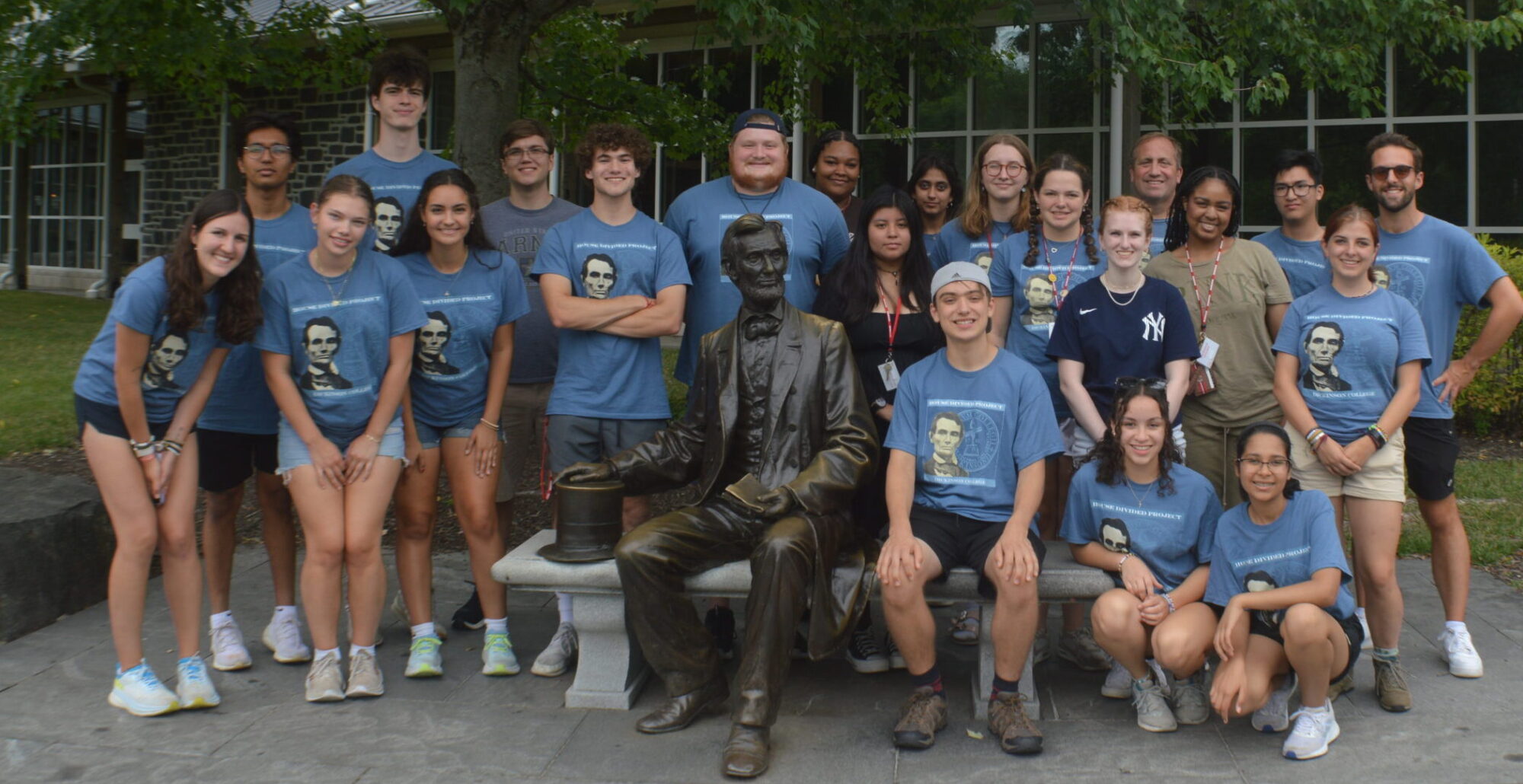During the four weeks after completion of the July seminar, students seeking college credit will be required to submit a second close reading reflection with embedded short video (by Friday, August 8) and a final essay (about 2,000 to 2,500 words or roughly 4 to 6 pages) that draws lessons about how best to achieve change in American democracy through comparing and contrasting the antislavery strategies of Frederick Douglass and Abraham Lincoln (by Friday, August 29).
Likely dates for OPTIONAL online college credit sessions:
- Tue July 29: 10am to 11am
- Thu July 31: 10am to 11am
- Friday Aug 8: Second close reading due
- Wed Aug 20: 10am to 11am
- Wed Aug 27: 11am to 12pm
- Friday Aug 29: Final Projects due
- Essays should have engaging openings with interpretative thesis statements that connect a small window in the Douglass / Lincoln comparison to the modern-day lessons the student has in mind.
- Here is an example from Jordyn Ney’s essay: “The question thus became who they should appeal to most to ignite change and when they should take action to ensure a positive outcome. Much like today, American politics was a balancing game between when to wait and when to act.”
- Here is an example from Charlotte Goodman’s essay: “Sometimes the differences in approaches taken by people on the same side of an issue are so great that it seems like they are working against each other.”
- Here is an example from Etsub Taye’s essay: “Both Douglass and Lincoln had individual strategies which they implemented. Douglass was an outspoken reformer who used his oration to relentlessly confront and denounce slavery. Meanwhile Lincoln under the guise of moderation laid foundations for powerful coalitions. However, it was through their simultaneous efforts that the abolition of slavery was made possible.”
Essays should include a descriptive title and sub-headings when helpful, properly captioned and credited images as well as Chicago-style footnotes, citing wherever relevant the primary source texts from the course syllabus as well as any secondary sources provided by the program, most notably James Oakes’s dual biography, The Radical and the Republican (2007), but also various suggestions from Further Reading.
- Make sure you are trying to format your footnotes correctly in the Chicago-style. See this methods handout on How to Use Footnotes and consult as needed with the library’s Chicago-style guide, but make sure to use sample footnote models for formatting and NOT bibliography examples.
- Also, please pay careful attention to how you use quoted material in your writing. This handout can help guide you to avoid awkwardness.
- Finally, there is a difference between paraphrasing and plagiarism. You must make sure you understand the distinction. Here is a handout to help guide you.
Outside research beyond these materials is allowed but not required. Final web projects will be graded on prose quality, research and depth of analysis.
